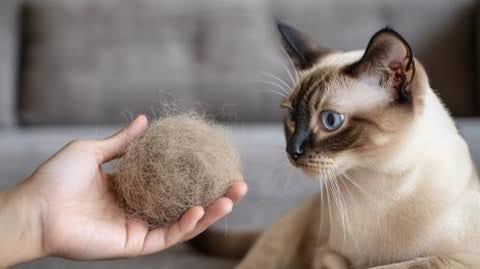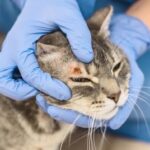 4 Aug
4 AugUnderstanding Hairballs in Cats: Causes, Prevention, and Treatment
Introduction: What Are Hairballs?
Hairballs, or trichobezoars, are a common issue for many cat owners, particularly for those with long-haired breeds. They occur when cats groom themselves and swallow loose fur, which can clump together in the stomach and form a hairball. Though it’s a natural behavior, hairballs can sometimes cause problems for both cats and their owners. In this post, we’ll explore the causes, symptoms, prevention strategies, and treatments for hairballs in cats.
Why Do Cats Get Hairballs?
Cats groom themselves using their rough tongues, which are perfect for removing loose fur from their coats. However, some of this fur ends up being swallowed, leading to the formation of hairballs. Cats that shed more frequently or have long, dense coats are more prone to hairballs.
Long-haired breeds like Persians, Maine Coons, and Ragdolls, for example, are especially susceptible to developing hairballs. But even short-haired cats are not exempt!
Main Causes:
Excessive Grooming: Cats with skin or coat issues may groom more than normal, leading to more hair ingestion.
Shedding: Seasonal shedding periods can result in more loose fur being ingested.
Health Conditions: Cats with digestive issues or obesity might develop more hairballs than healthy cats.
Symptoms of Hairballs in Cats
While occasional hairballs are perfectly normal, frequent or large hairballs can indicate a problem. Common signs to watch for include:
Vomiting: Cats may vomit a hairball, usually after trying to cough it up.
Coughing or Gagging: Sometimes, the hairball will get stuck in the cat’s throat.
Constipation or Diarrhea: Digestive distress can occur if hairballs are not properly passed.
Loss of Appetite or Lethargy: Prolonged discomfort from a stuck hairball can cause a cat to eat less and become more sluggish.
How to Prevent Hairballs in Cats
While you can’t eliminate hairballs entirely, there are steps you can take to reduce their frequency.
1. Regular Grooming
Brushing your cat regularly (especially long-haired breeds) is one of the most effective ways to minimize hairballs. It helps remove loose fur before it’s ingested, preventing excessive hair from getting into their stomachs. Aim for brushing at least 2-3 times a week, or more often during shedding seasons.
2. Dietary Solutions
There are specially formulated cat foods that contain fiber to help move hairballs through the digestive system. These foods also promote a healthy coat and can reduce shedding.
Additionally, adding hairball treats or fiber supplements to your cat’s diet can aid in digestion and help pass hairballs more easily.
Also, you can use anti-hairball pastes on daily basis as prophylaxis.
3. Hydration
A well-hydrated cat is less likely to have digestive issues related to hairballs. Ensure your cat has access to fresh water at all times. Some cats prefer drinking from a running fountain, so this might encourage them to drink more.
4. Health Check-ups
If your cat is frequently vomiting hairballs, it may be a sign of an underlying health condition. A visit to the vet can help rule out any digestive disorders or other issues that may be contributing to the problem.
Treatment Options for Hairballs
If your cat already has a hairball, there are a few ways to help them pass it more comfortably.
1. Hairball Gels or Pastes
There are over-the-counter gels and pastes designed to help lubricate the hairball, allowing it to move more easily through the digestive system. These are usually flavored and easy to administer, making them a popular choice among cat owners.
2. Vet-prescribed Medications
In some cases, a veterinarian might recommend medications to assist with passing hairballs, especially if the cat is having difficulty.
3. Encourage Play
Stimulating your cat’s digestive system through play can encourage them to move and pass the hairball more effectively. Interactive toys that mimic prey can get your cat moving, which may help with digestion.
When Should You Worry About Hairballs?
Occasional hairballs are perfectly normal, but frequent or particularly large ones may require attention. If your cat is vomiting multiple times a week, or if they seem to be having trouble passing hairballs, it’s best to consult your vet.
Conclusion
Hairballs are a natural part of cat behavior, but they don’t have to be a frequent nuisance. By understanding why hairballs occur, and taking preventative measures, you can help keep your feline friend comfortable and healthy. Regular grooming, a balanced diet, and keeping your cat hydrated will go a long way in reducing hairball-related problems.
At Vetefy, we offer a wide range of anti hairball paste to help prevent and treat hairballs in your pets. we’re here to provide you with the best solutions to keep your pets healthy and happy.




